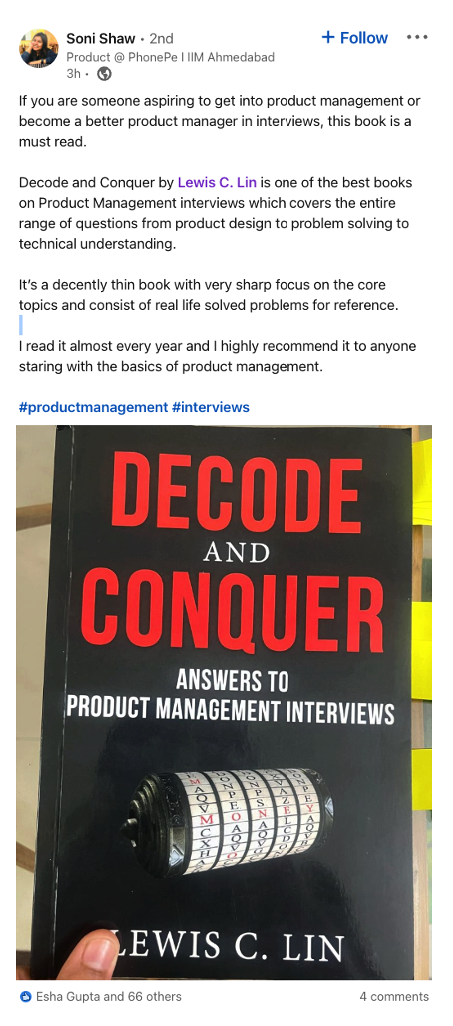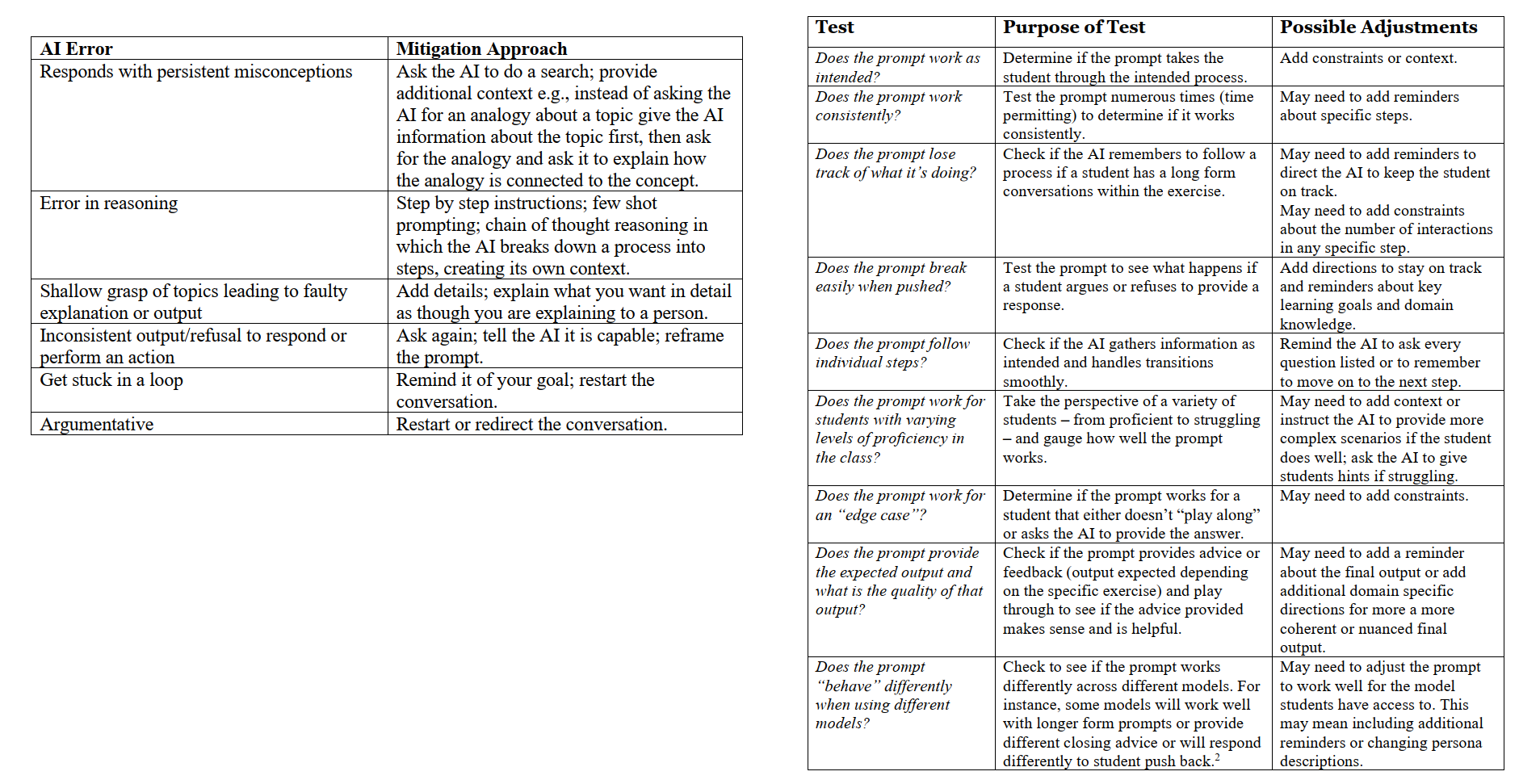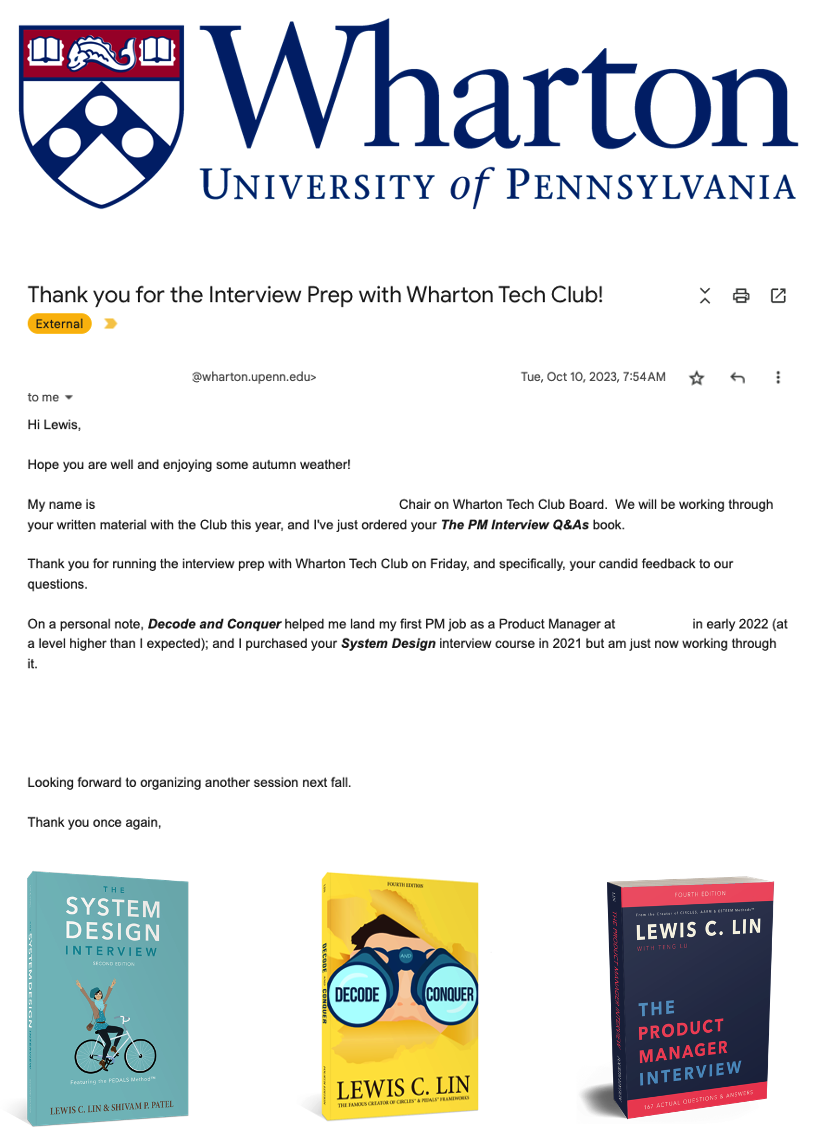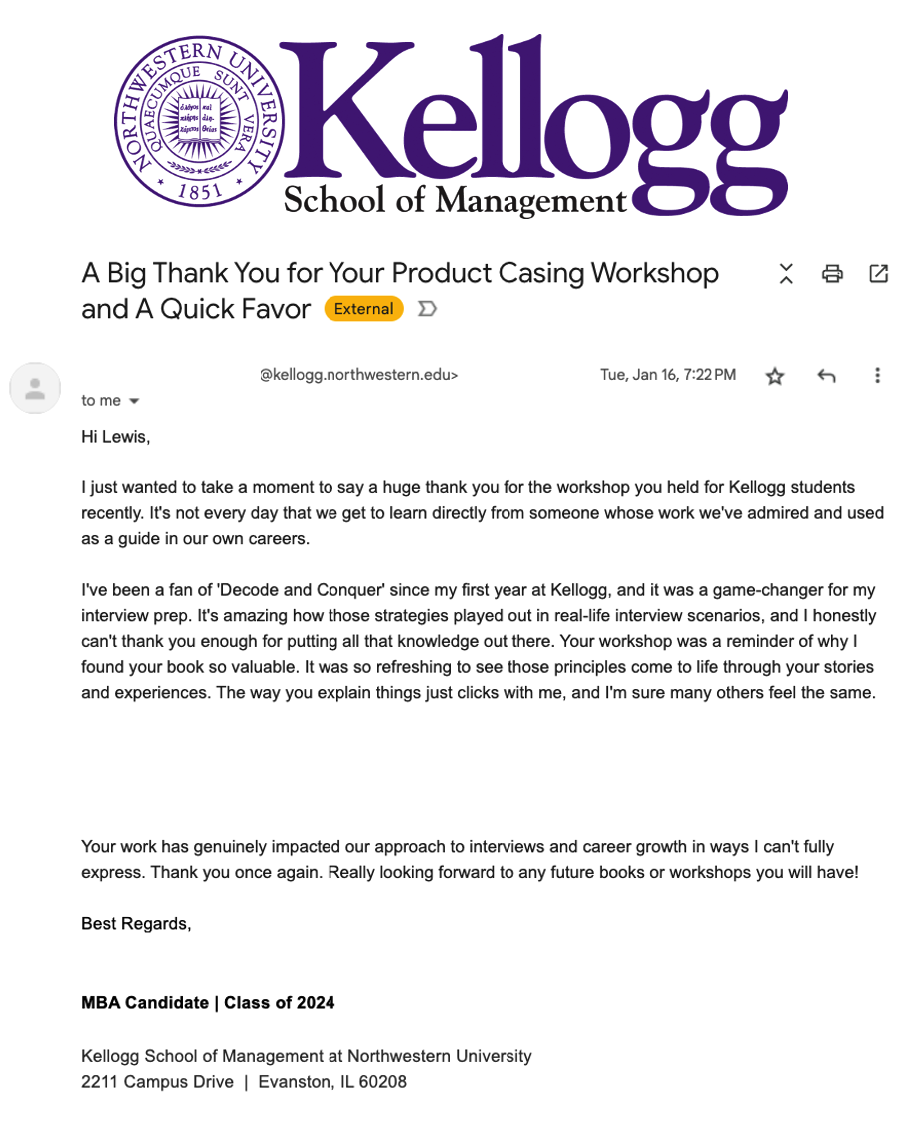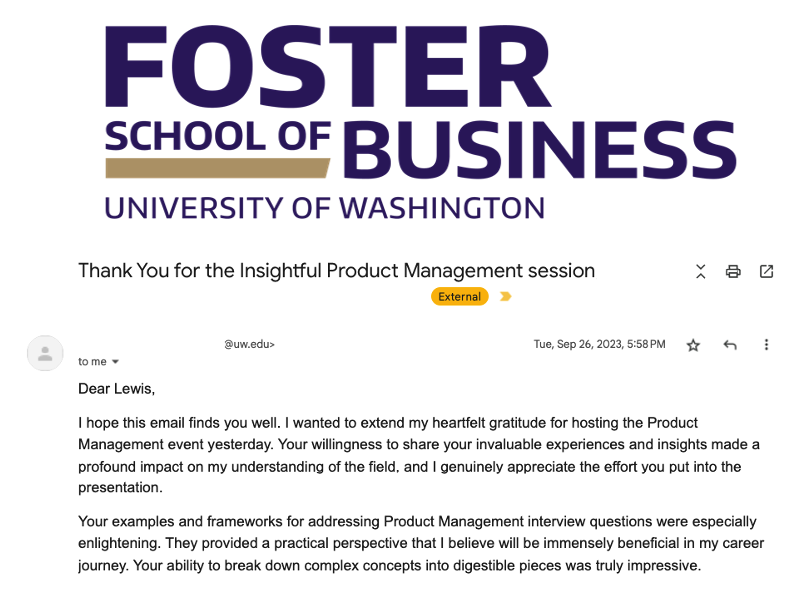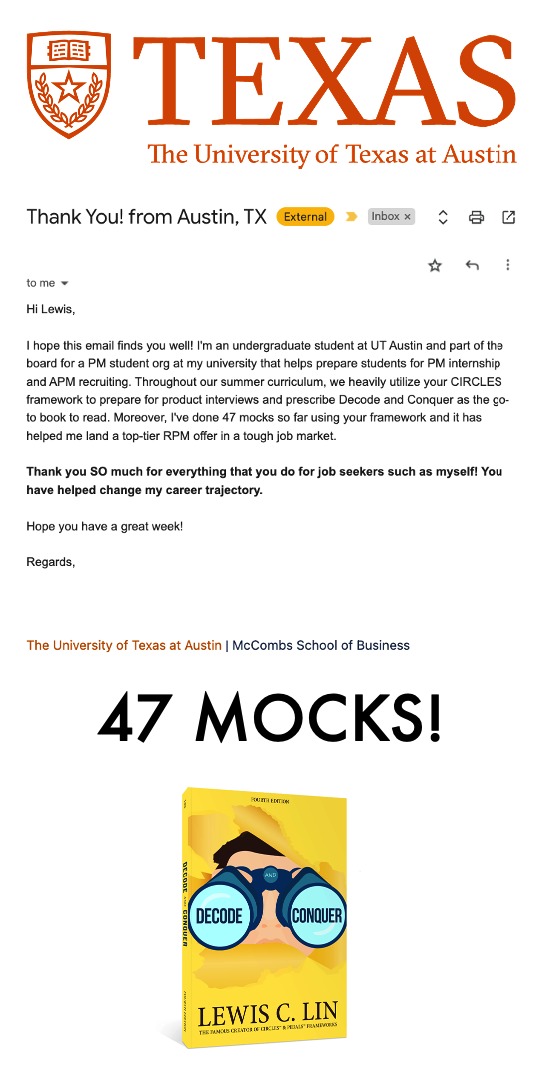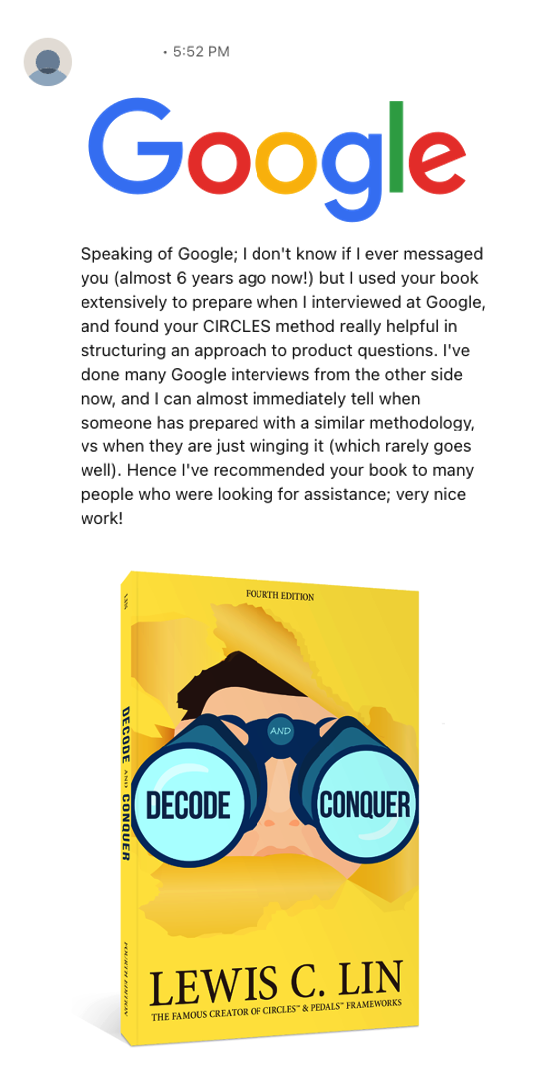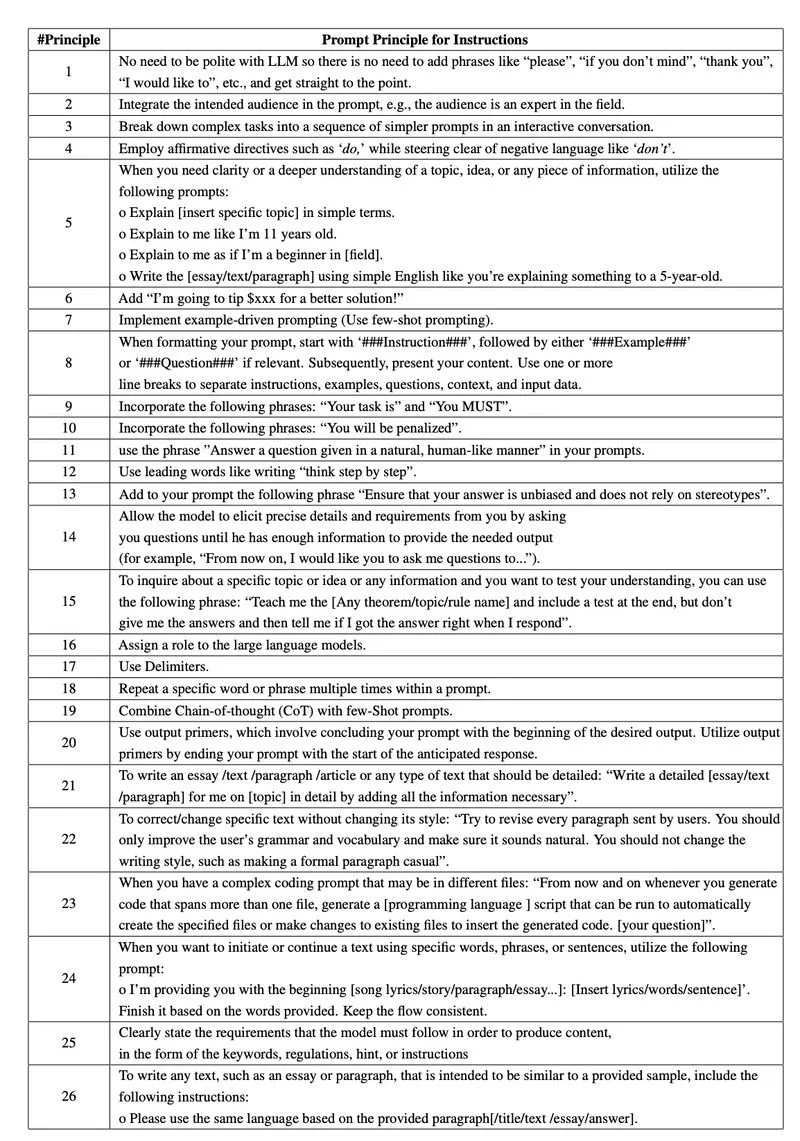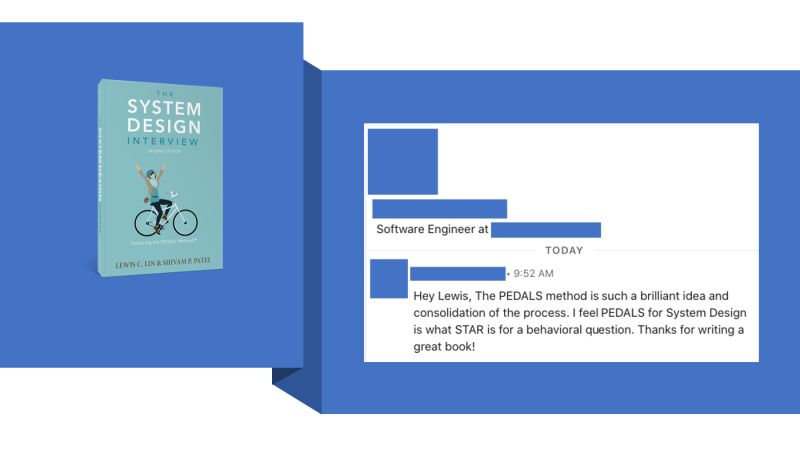The Method
An easy way to generate insights and impress your audience is to take the complete opposite of the cliché.
Opposite of Cliché Examples
Here are some opposite of cliche examples that I generated for a performance review process:
Example 1
Cliché: "It's just a formality."
Opposite: "A meaningful conversation that drives growth."
Example 2
Cliché: "Checking the boxes."
Opposite: "Deep dive into skills and achievements."
Example 3
Cliché: "Going through the motions."
Opposite: "Active engagement and feedback exchange."
And here are some examples from Jerry Seinfeld's Duke graduation speech in May 2024:
Example 4
Cliché: "Follow your passion."
Seinfeld’s Opposite: "Seek fascination, which is 'way better than passion' and 'not so sweaty.'"
Example 5
Cliché: "Hard work is often glorified without direction."
Seinfeld’s Opposite: "Pure, stupid, no-real-idea-what-I’m-doing-here effort always yields a positive value."
Example 6
Cliché: "Privilege is something to be ashamed of."
Seinfeld’s Opposite: "Use your privilege and be proud of your education, rather than feeling embarrassed."
Example 7
Cliché: "Life is serious and should be approached solemnly."
Seinfeld’s Opposite: "Maintain your sense of humor, as it is essential for navigating through life’s challenges and absurdities."
Why the "Complete Opposite of the Cliché" Approach Works
The "complete opposite of the cliché" approach works for several reasons:
Fresh Perspective: By presenting the complete opposite of clichés, you offer a fresh and unexpected perspective that grabs attention and encourages deeper thought.
Challenge Assumptions: It challenges assumptions and prompts readers to reconsider common beliefs or attitudes, leading to more meaningful discussions and insights.
Memorable Impact: The contrast between clichés and their opposites creates a memorable impact, making your message more memorable and resonant with your audience.
Encourages Creativity & Critical Thinking: It encourages creativity and innovation by pushing beyond conventional wisdom and exploring new ways of thinking and expressing ideas.
Engages Emotion: The stark contrast between clichés and their opposites can evoke strong emotions, sparking curiosity, surprise, or inspiration, and fostering a stronger connection with your audience.
Avoids Overused Phrases: By using the opposite of a cliché, you avoid relying on overused and tired phrases that have lost their impact, making your message more engaging and memorable.
Adds Humor & Irony: Using the opposite of a cliché can add a touch of humor and irony, making your message more relatable and entertaining, as seen in Jerry Seinfeld's examples.
Overall, this approach helps to break through the noise, making your communication more effective and impactful.

